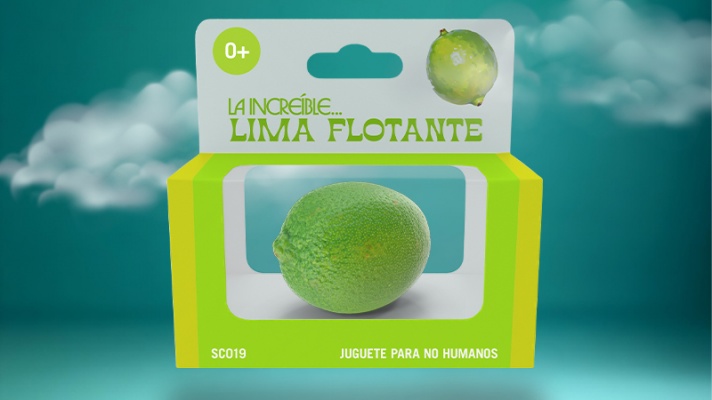Descripción de la Exposición
Exhibition Black Disguises deals with migrations that produce excess in everyday life. By this we mean that migration process cannot be a result of a stable condition, but an outcome of going beyond: beyond authority, beyond boundaries or borders, beyond measures or regulations.
With a foothold in art practices and the current social condition, the exhibition addresses the issues of migrations, labor and economy. It explores the potential of change as the necessity in life and the risks of facing the everydayness that are placed both before the migrants and the people who are not in the process of migrating (yet). Taking different approaches – from personalized and poetic to documentary and critical – the exhibited works highlight the (im)possibility of coping with the situations of broken security and protection, with disorientation and hopelessness, with the struggles of optimism and togetherness. At the junction of politics and poetry, the second edition of the international project RISK CHANGE presents twelve authors who move away from the socio-political statistics and explore the emotional and mental background of migrations. RISK CHANGE aims to define migrations as a general principle, investigating their real and fictional possibilities beyond the set boundaries. It testifies to the timelessness of the phenomenon, and speaks of the lasting artistic preoccupation with the motif of fragility of human relationships, and the excess of insecurity and rejection this topic creates.
In her video-installation entitled Collision, Ana Sladetić indirectly addresses the issue of the control of people’s mobility within the existing administrative frameworks that often prove to be constraining and harmful to basic human freedoms. With a belief that frictions and collisions are most often the side effects of excessive states, Ana thematizes the act of surmounting the boundaries as an experience of confusion and conflict, especially in the cases of mass migrations. Also exploring the topic of conflict, Carlos Aires’ video Sweet Dreams Are Made of This appears as a monumental depiction of the alliance of luxury, power and violence, where the excess comes wrapped in a metaphor of a tango dance performed by two disguised members of (the Spanish) special police. Violence as a leitmotif in the society of fallen justice is explored in the video-installation Rio de Janeiro, Illegal City, by Rafael Puetter alias Rafucko. Rafucko juxtaposes a sporting mega-event with an everyday fight for basic human rights (freedom of movement, equality), the fight in which getting used to the risk becomes a common phenomena. The relationship between migration flow and capital flow can be seen in the documentary Jesenice-Stuttgart by Miroslav Mikuljan. Offering brief images from a train station where the Yugoslavs’ boarded the trains to Germany, the film reflects the ideological and working ethics of the 1970s. A voice heard over the speakers calls for unity, equality and peace, expressing gratitude to the immigrants for their share in the making of the future. Next to the bubble of optimism and the faith in a brighter tomorrow, there is the awareness of unexpected restrictions and control that actually affect these migrations.
The failures of the international politics in the field of sovereignty and equality, which cause even bigger class divisions, are the main themes of Cristiano Berti’s and Can Sungu’s installation Highlife. Addressing the issue of limitations in labor market and the absence of social integration of the migrants, the installation takes the form of a home with cardboard walls, revealing a fantasized reality that reflects the need for personal safe zones with the society. The documentary by Marianna Christofides Sundays in Nicosia goes along the similar lines, depicting women migrant workers who in their Sunday get-togethers build their own social space, which functions as a catalyst of change and symbolizes resistance against the social isolations. The quest for a better life, as one of the most often reasons for migrations, is also captured in a video-installation called Limb by Laurent Van Lancker. The scenes from a migrant camp suggest a feeling of disorientation and hopelessness of the people who are forced to set out into the unknown. Elejan van der Velde’s installation Untitled (the Black Matter) explores the exhaustion of time that comes as the effect of living in constant uncertainty, which ultimately leads to catastrophe. On the other hand, the renewability of depleted things and an exchange for something new and positive becomes a precious source of creation in the work of Roos van Haaften. Made of discarded materials and placed under reflectors, his installation entitled Wonderful Isolation takes on the appearance of dystopic micro-landscapes, symbolizing an attempt of reducing the excessive. The topographic projections of Aleksandar Garbin act as polygons for testing the solutions to the newly-arisen conditions. Cartographic motifs play with their usual meanings by choosing not to represent reality as a tangible image, but as a metaphysical state (Compounds, Transferred Surfaces, Area neutra, Geographical Flag Project). The contemplation of space as the place of escape, refuge and disappearance is what makes Davor Sanvincenti’s photographic series called Borders. The artist draws attention to the duality of the relationship between mobility and hindrance, comparing it with mountains – mountains as surmountable obstacles, places of loose boundaries, in contrast to the fixedness of territorial and political borders.

Exposición. 16 abr de 2025 - 11 may de 2025 / Centro Botín / Santander, Cantabria, España

Formación. 08 may de 2025 - 17 may de 2025 / Museo Nacional Centro de Arte Reina Sofía (MNCARS) / Madrid, España